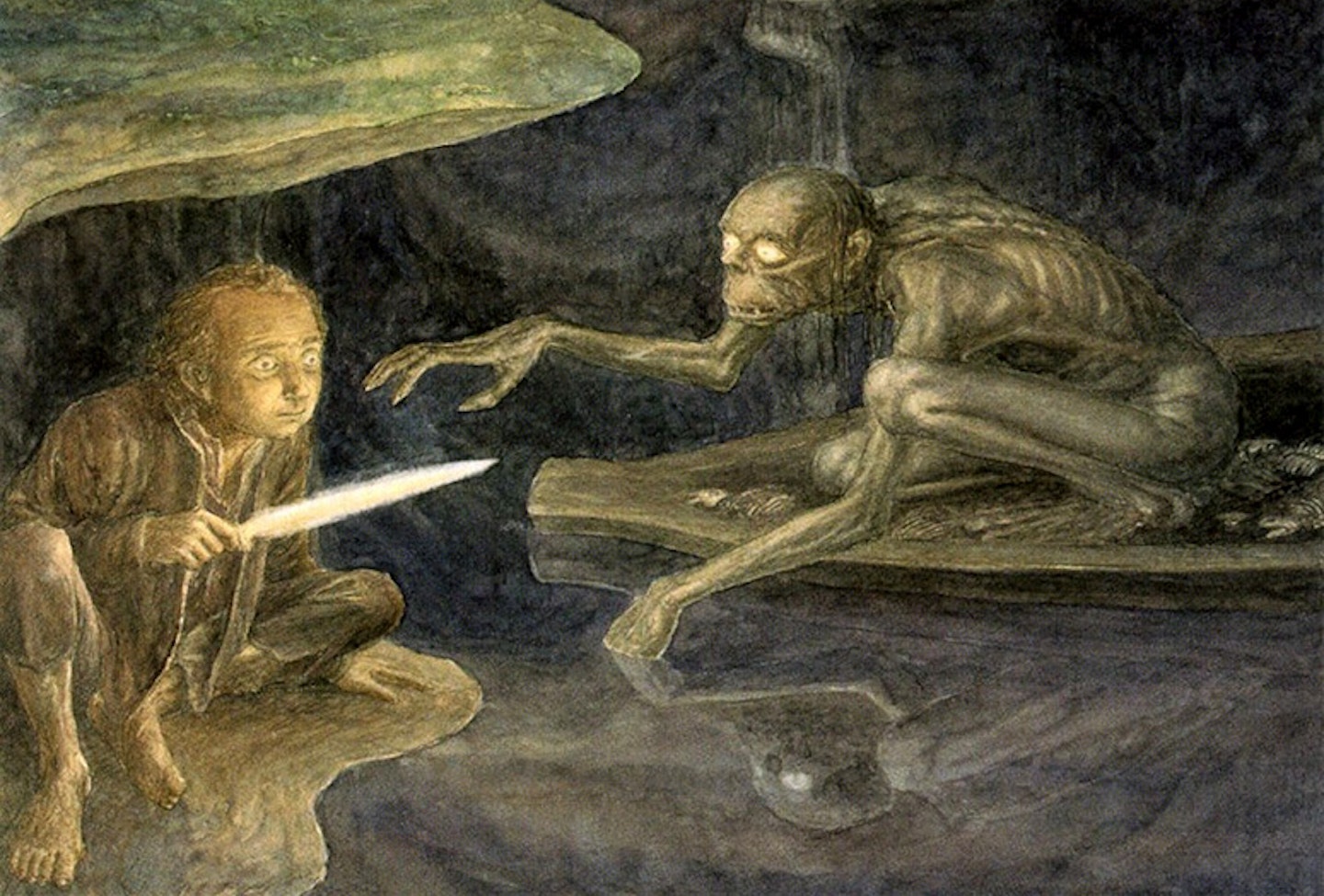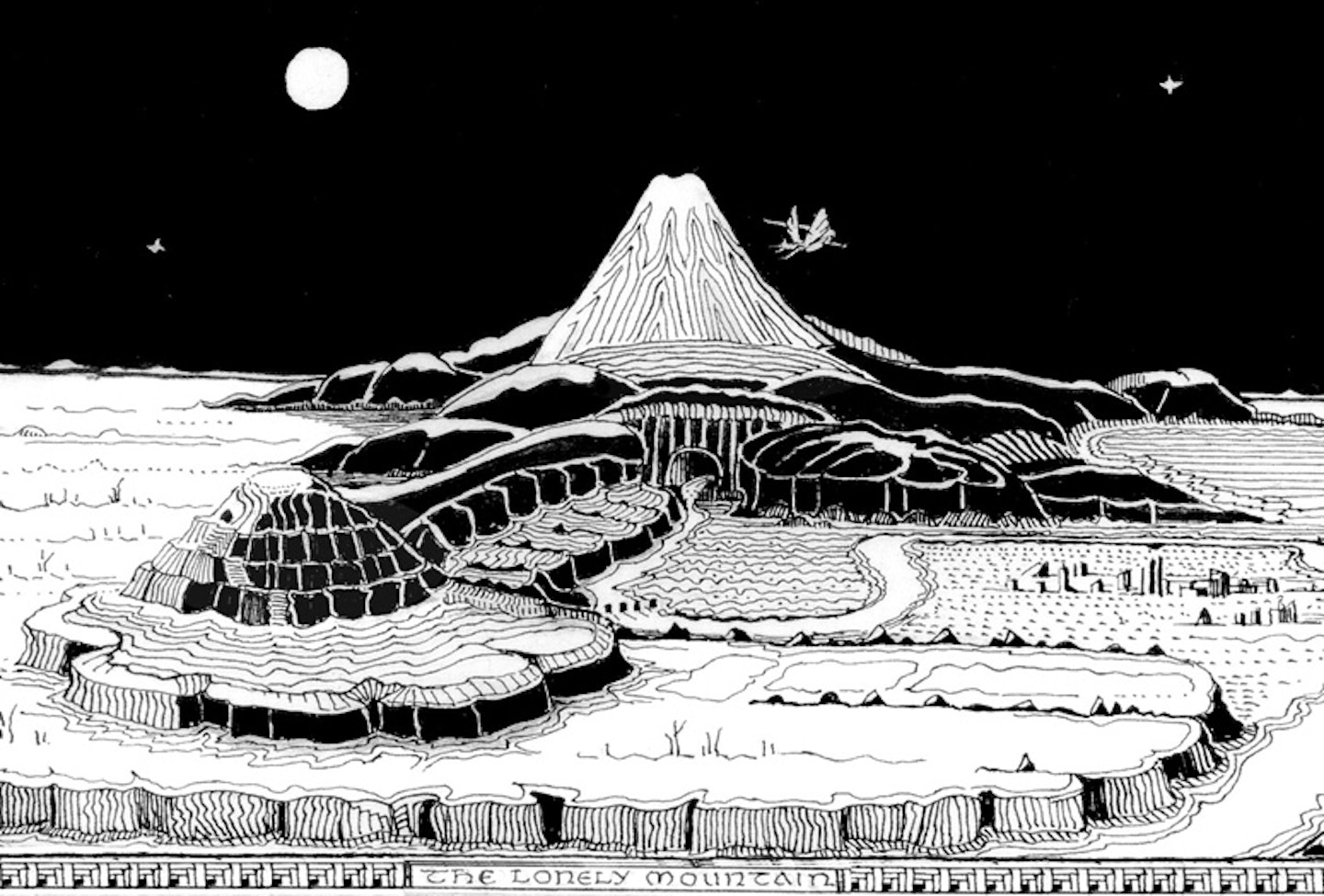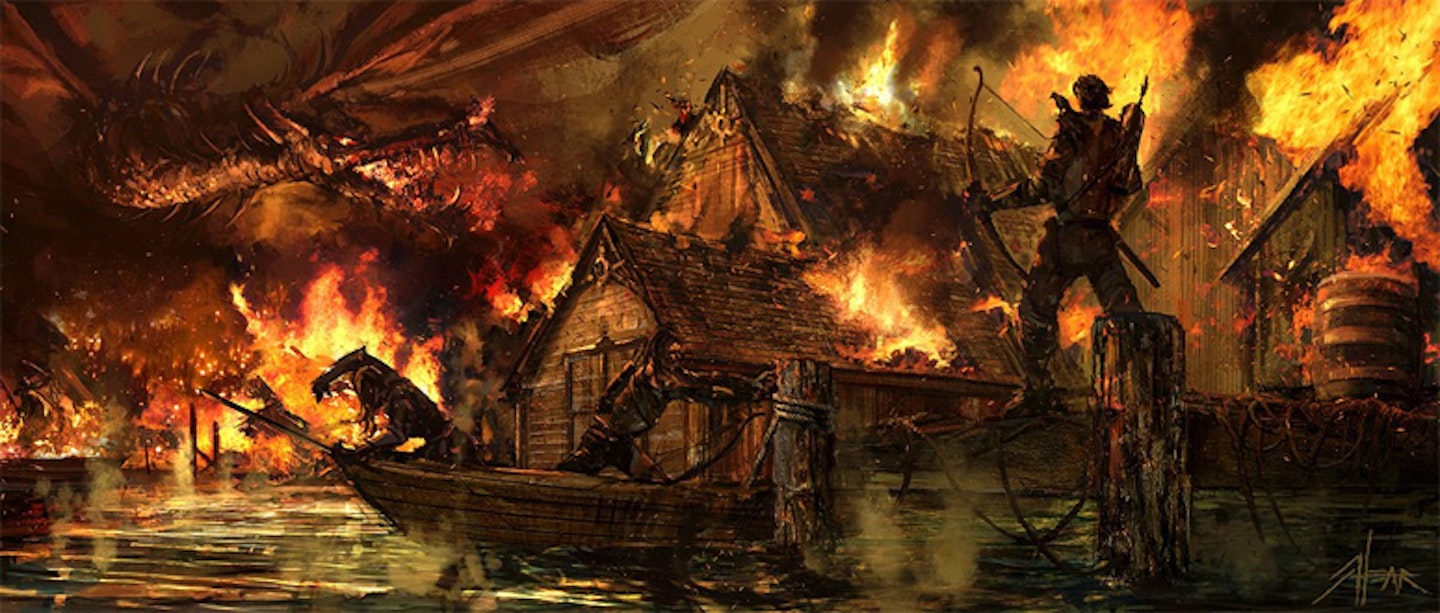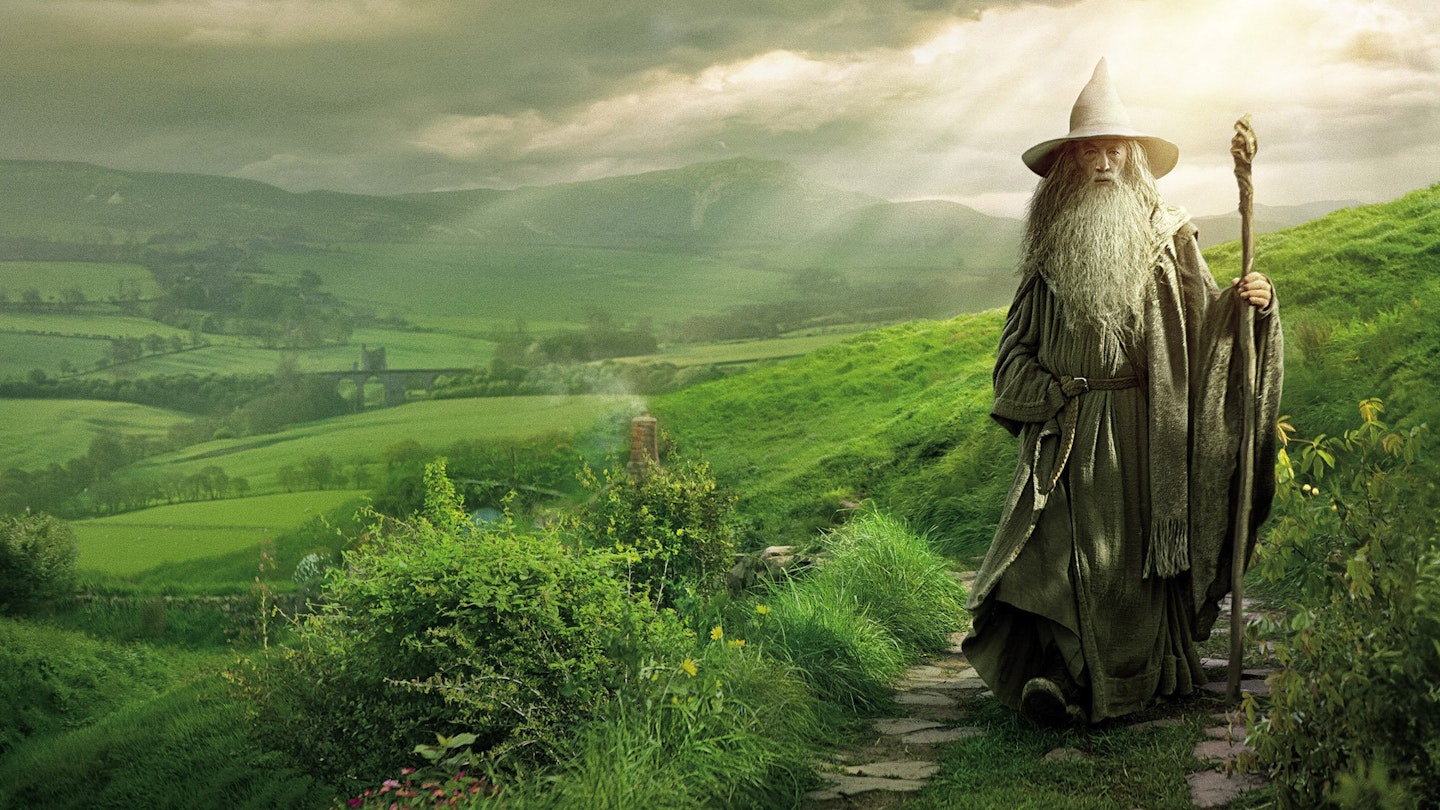 If you're Tom Bombadil's agent, you'll know full well that not all of J.R.R. Tolkien's characters have made the journey from the written page to the silver screen. The Hobbit may be a shorter, more linear tale than the Rings trilogy, but, faithful as he is to the spirit of Middle-earth, Peter Jackson has never let sentiment stand in the way of story. Even with The Hobbit split in two, not every gnarled goblin, gleaming mattock or tankard of miruvor will make the final cut. There are some certainties - Smaug's assault on Lake-town, Bilbo's arrival in Rivendell and a whole lot of walking - but will all that talking wildlife make the cut? We’ve gazed into our palantír to guess at what will – and probably won’t – appear in the two movies.
If you're Tom Bombadil's agent, you'll know full well that not all of J.R.R. Tolkien's characters have made the journey from the written page to the silver screen. The Hobbit may be a shorter, more linear tale than the Rings trilogy, but, faithful as he is to the spirit of Middle-earth, Peter Jackson has never let sentiment stand in the way of story. Even with The Hobbit split in two, not every gnarled goblin, gleaming mattock or tankard of miruvor will make the final cut. There are some certainties - Smaug's assault on Lake-town, Bilbo's arrival in Rivendell and a whole lot of walking - but will all that talking wildlife make the cut? We’ve gazed into our palantír to guess at what will – and probably won’t – appear in the two movies.
Key Tolkien quote: “’Dawn take you all, and be stone to you!’ said a voice that sounded like William’s. But it wasn’t. For just at that moment the light came over the hill, and there was a mighty twitter in the branches. William never spoke for he stood turned to stone as he stooped; and Bert and Tom were stuck like rocks as they looked at him. And there they stand to this day… ”
Surely the first recorded example of live tweeting, Gandalf’s ventriloquism baffles a small band of trolls. Not the smartest of creatures, the monsters are so befuddled they forget about the whole-getting-turned-to-stone-business and don’t scurry back underground as the sun rises. They’re encased in rock, and, as the sharp-eyed will know, pop up again in their stony guises when Frodo and co. stumble upon them in Fellowship Of The Ring. Tolkien used the trolls as a comic device – they speak in Cockney accents, are partial to a foaming ale and are thicker than two short planks sawn in half – but Peter Jackson might be tempted to drop the music-hall campness of the scene in favour of something more menacing. With Sauron’s help the trolls had morphed into the much more sinister Olog-hai in the Rings trilogy and were immune to the rays of the sun (hence the sight of one opening the Black Gate in The Two Towers). The Olog-hai probably wouldn’t have fallen for Sir Ian McKellen’s troll impression.

Key Tolkien quote: “The riddle-game was sacred and of immense antiquity, and even wicked creatures were afraid to cheat when they played at it.”
The chances of the most pivotal scene in the whole mythology of Middle-earth not making the final cut are roughly equal to the likelihood of Smaug joining the Samaritans. We’re saying this is a stick-on to be played pretty much by the book. It is, after all, our first meeting with Gollum. It’s also Bilbo’s first encounter with the Ring, and arguably the best riddle-off this side of The Last Crusade, with the pair firing brain-twisters at each other with life and death hanging in the balance. As the first encounter between Martin Freeman’s Hobbit and performance-capture veteran Andy Serkis, reprising his role as ol’ lantern eyes, it’s a cerebral set-piece at the heart of much questing and dragon battling. It plays out in the dank interior of the Misty Mountain, where the shadowy wordplay will present a challenge not just for Bilbo but the man who has to light it all, The Hobbit’s cinematographer Andrew Lesnie. It’s worth noting that we’ve seen the scene in the Fellowship prologue. Can Jackson replay the scene with Martin Freeman’s Bilbo replacing the Ian Holm version without twisting all our melons beyond repair? That’s not a riddle, we’re just wondering.
Key Tolkien quote: “It was a terrible battle. The most dreadful of all Bilbo’s experiences, and the one which at the time he hated most – which is to say it was the one he was most proud of, and most fond of recalling long afterwards, although he was quite unimportant in it.”
The story’s culmination is, like Return Of The King, a huge battle that will serve as an epic sign-off for Jackson’s Tolkien-tacular. The Uruk-hai are still a twinkle in Sauron’s eye at this point and the mumakil otherwise engaged, but there’s still several armies for Weta Digital’s SFX whizzes to realise. They form a violent mass of elves, dwarves, wargs and goblins spreading across the shadow of Lonely Mountain. As much as anything, it’ll be interesting to compare the set-piece’s CGI with the groundbreaking digital effects of Pelennor Field, 11 years earlier. Expect your eyeballs to pop out; expect the 3D glasses to keep them from getting too far.
Key Tolkien quote: “Some say that he is a bear descended from the great and ancient bears of the mountains that lived before the giants came. Others say that he is a man descended from the first men who lived before Smaug or the other dragons came into this part of the world, and before goblins came into the hills out of the North. I cannot say, though I fancy the last is the true tale. He is not the sort of person to ask questions of.”
In Tolkien’s text Beorn is described as “a skin-changer”. This, as Gandalf explains to Bilbo and the dwarves, makes him both most mysterious and dangerous, despite his fondness for twice-baked honeycakes. But is he human or bear? Well, a little from column A and a little from column B. He’s able to morph into a great black bear at will and commune with his fellow mammals. If that makes him sound like a walking Werner Herzog documentary, he does play a significant role in the story. Not only do Gandalf, Bilbo and their dwarfish companions stop at his abode after fleeing the wargs and goblins in the Misty Mountains, he also pops up at the Battle of the Five Armies in full ursine guise. There he saves Thorin (Richard Armitage) and slays Bolg, the goblin leader. Will he end up as The Hobbit’s Tom Bombadil? Well, no - Swedish actor Mikael Persbrandt has been cast in the role – but how much screen time is allotted to him is open to question. And will Joe Letteri and his Weta Digital team be called on to push the CG boundaries again to make show him in full shape-shifting mode?

Key Tolkien quote: “’I am Roäc son of Carc. Carc is dead, but he was well known to you once. It is a hundred years and three and fifty since I came out of the egg, but I do not forget what my father told me… Most of my people are abroad, for there are great tidings in the South – some are tidings of joy to you, and some you will not think so good.’”
Tolkien’s birds play an important role in the final act of The Hobbit. Along with the giant eagles and news-gathering thrush, Roäc, chief of the ravens of the Lonely Mountain, is another feathery deus ex machina. He’s on hand to inform the dwarves of Smaug’s death and share some sage words of caution as Thorin and Company hatch a plan to keep the dragon’s gold for themselves. Unlike in Rings, Jackson’s challenge on The Hobbit is to make animals talk without looking really daft, or, worse, like Ray Winstone’s Mr. Beaver. Alternatively, he could just skip this puzzler altogether and give all the dwarves Blackberries.
Key Tolkien quote: “’Hmmm! It smells like elves!” thought Bilbo, and he looked up at the stars. They were burning bright and blue. Just then there came a burst of song like laughter in the trees...”
Elves have many attributes: loyalty, longevity, beauty, wry humour and big pointy ears. According to the text they’ve also got vocals chords to match, but the lengthy singalong that greets Bilbo’s arrival in Rivendell might end up in the giant busking bin in the sky. Even Howard Shore would struggle to stop all those “tra-la-la-lallys” sounding a little silly drifting through the valley. It’s an unusually warm welcome for the Hobbit, who normally finds someone trying to eat him, but we’d hazard it’s still ripe for the chop.

Key Tolkien quote: “Then Bard drew his bow-string to his ear. The dragon was circling back, flying low, and as he came the moon rose above the eastern shore and silvered his great wings. ‘Arrow!’ said the bowman. ‘Black Arrow! I have saved you to the last. You have never failed me and always I have recovered you. I had you from my father and he from of old. If ever you came from the forges of the true king under the Mountain, go now and speed well!’”
A miserable fellow prone to doomy comments about possible flooding and toxic kippers, Bard the bowman (“grim-voiced and grim-faced”) wins minimal points for good humour. He does, however, score highly for dragon-slaying. In the book Bard defends his home town from assault by Smaug when the great dragon arrives to turn Lake-town to toast, using a tip provided by an old thrush, the original angry bird. The chirping informant overhears Bilbo talking of the reptilian raider’s weak point and relays it, at the critical moment, to Bard. It’s a crucial intervention, and, we’d hazard, impossible to omit from the movie. Less likely to make the cut is what happens next: a monologue by the morose bowman delivered to his arrow. On screen addresses to inanimate objects have their place – Toy Story, for instance – but when we see Bard bringing his righteous archery skills to bear on Smaug, it’d be a big surprise to see his arrow get the full pep talk.
